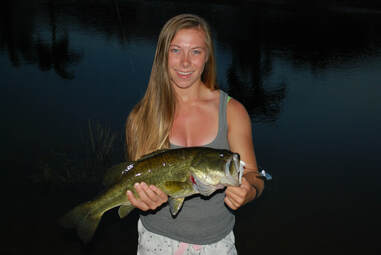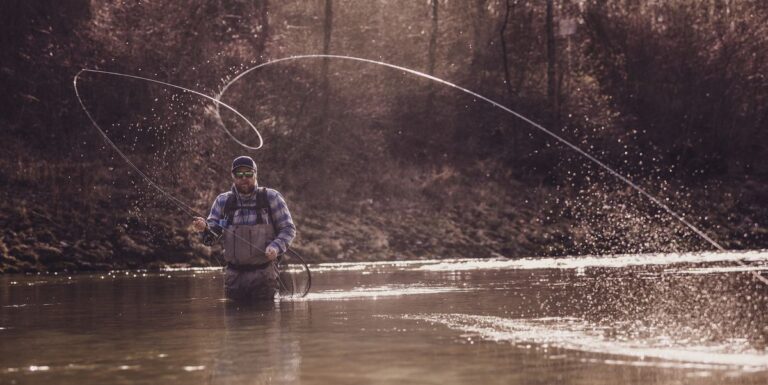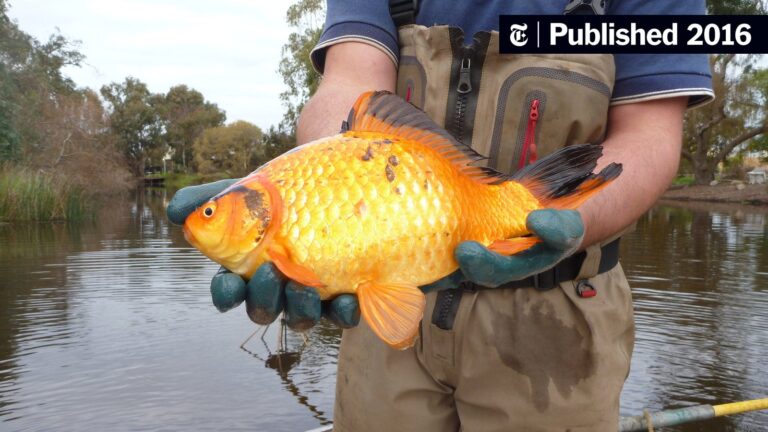Pond fishing for beginners involves simple techniques and gear. In order to get started, you just need a fishing rod, reel, some basic tackle, and a good location.
Fishing in a pond can be a great way to spend time with family, de-stress and enjoy the beauty of nature. However, if you’re new to fishing, it can be a bit overwhelming trying to figure out what gear to buy and what techniques to use.
To help you get started, we’ve put together this guide to pond fishing for beginners. We’ll cover everything you need to know about selecting the right gear, finding the perfect spot, and catching your first fish. By the end of this guide, you’ll be well on your way to becoming an expert pond angler.

Credit: fishyourassoff.com
Essential Fishing Gear For Pond Fishing
Pond fishing is an excellent way to relax, unwind, and catch some fish. The calm waters of a pond, with their abundance of fish species, make it an ideal spot to try your hand at fishing. Whether you are a beginner or an experienced angler, having the right gear is essential to make the most out of your fishing trip.
In this blog, we will examine the fundamental equipment you need for pond fishing, how to choose the right fishing rod, reel, and line, and the types of bait and lures that work best.
The Fundamental Equipment You Need For Pond Fishing
Before you head out to the pond, make sure you have the following essential equipment in your fishing kit:
- Fishing rod and reel: A basic spinning rod and reel, ideally with a 6-7 foot rod and a 2500-3000 size reel, should suffice for most pond fishing situations.
- Fishing line: Choose a monofilament line with a light to medium weight (6-10lb test), as it is durable, easy to use, and can handle the weight of most pond fish species.
- Hooks and sinkers: Have a selection of hooks (sizes 4-10) and sinkers (1/8-1/4 ounce) in your tackle box. Worm hooks work best for live bait, while treble hooks are good for fake or artificial bait.
- Bobbers: Bobbers or floats indicate when a fish has taken the bait. A small, round, lightweight bobber is suitable for pond fishing.
- Pliers and scissors: Use pliers and scissors to cut the line or hooks and remove the fish from the hook.
- Tackle box: Keep all your fishing gear organized in a tackle box so that you can easily access it when you need it.
How To Choose The Right Fishing Rod, Reel, And Line For Pond Fishing
Selecting the appropriate fishing gear is crucial to a successful and enjoyable pond fishing experience. Here are some key points to keep in mind while choosing the right gear:
- Fishing rod: Choose a rod with a length of 6-7 feet and a soft to medium power rating. Fast action or stiff rods are not effective in pond fishing, as they often cause the fish to pull off the hook.
- Reel: Select a reel that matches the rod size and strength. A 2500-3000 size spinning reel is an ideal option for pond fishing.
- Fishing line: Keep in mind the fish species you are targeting when choosing a fishing line. Use a monofilament line with a light to medium weight (6-10lb test) is suitable for most pond fishing situations.
The Types Of Bait And Lures That Work Best For Catching Pond Fish
Using the right bait or lure is crucial when it comes to catching fish in a pond. Different types of fish prefer different types of bait, so it’s essential to have a variety of options in your tackle box. Here are some of the best bait and lure options for pond fishing:
- Live bait: Worms, insects, and small minnows are the most effective live baits for pond fishing. Hook the bait carefully so that it remains lively in the water and attracts the fish.
- Fake or artificial bait: A variety of lures, such as spinners, jigs, and crankbaits, perform well in pond fishing. Choose a lure based on the fish species you hope to catch and the water conditions.
- Topwater bait: These lures mimic the sound and movement of prey on the surface of the water. They work well for species such as bass and panfish.
With the right equipment and knowledge, pond fishing can be a successful and rewarding experience. Remember to follow local regulations and respect the environment while fishing. Get your gear ready, head to your nearest pond, and enjoy a relaxing day of fishing!
Pond Fishing Techniques And Tips
If you are new to pond fishing, it can be challenging to know where to begin. With so many different techniques, it’s understandable to feel a little overwhelmed. But don’t worry, as with most things in life, practice makes perfect.
Here are some pond fishing techniques and tips to get you started.
How To Read A Pond’S Water For Potential Fishing Spots
Before you start fishing, it’s essential to understand how to read a pond’s water for potential fishing spots. By understanding the pond’s water, you will be able to determine where the fish are most likely to be found. Here are some things to watch out for:
- Look for drop-offs or holes in the pond, as these areas are likely to be where fish congregate.
- Look for changes in water depth, such as shallow areas, weed beds, submerged logs, and fallen trees.
- Pay attention to the water’s color and texture, as these factors can help you identify where the fish might be hiding.
Understanding The Behavior Of Pond Fish And How To Use That To Your Advantage
Understanding the behavior of pond fish is crucial to catching them. Here are some tips to help you get started:
- Fish are more active during the early morning or late evening hours, so plan your fishing accordingly.
- Keep in mind that fish are more likely to bite on cloudy days than sunny days.
- Fish are often attracted to movement, so try to mimic the behavior of insects or small fish when you are retrieving your bait.
Different Techniques For Casting And Retrieving
There are several different techniques for casting and retrieving your bait. Here are a few that you may find helpful:
- The basic cast and retrieve involves casting your bait out and then reeling it back in slowly.
- With the jigging technique, you move your bait up and down in the water column to attract fish.
- The drop-shot technique involves suspending your bait above the fish, allowing it to move naturally with the water.
How To Hook, Fight, And Land Pond Fish
Once you have hooked a fish, it’s time to fight and land it. Here are some tips to keep in mind:
- When you feel a bite, wait a few seconds to ensure the fish has fully taken the bait before setting the hook.
- Keep the line taut while fighting the fish to avoid it escaping.
- Once you’ve got the fish close to the water’s surface, use a net to scoop it up, making sure to handle the fish gently to avoid injuring it.
Remember, the key to successful pond fishing is practice and patience. With these techniques and tips in mind, you’ll soon be reeling in the big catch.
Conclusion
As a beginner, you might find pond fishing a bit intimidating. However, with the right knowledge, equipment, and practice, catching fish in ponds can be an enjoyable experience. Remember to choose the right equipment to match the fish species, use the right bait and techniques, and give yourself ample time to practice.
Identifying the right location, including weed beds and structures, can also increase your chances of catching a fish. Lastly, it’s crucial to follow fishing regulations and be respectful to the environment and other anglers. Whether you’re fishing for relaxation or looking to catch your next meal, pond fishing is an excellent way to spend your time.
By following the tips mentioned in this article, you’ll be ready to make the most out of your next pond fishing trip. Happy fishing!





